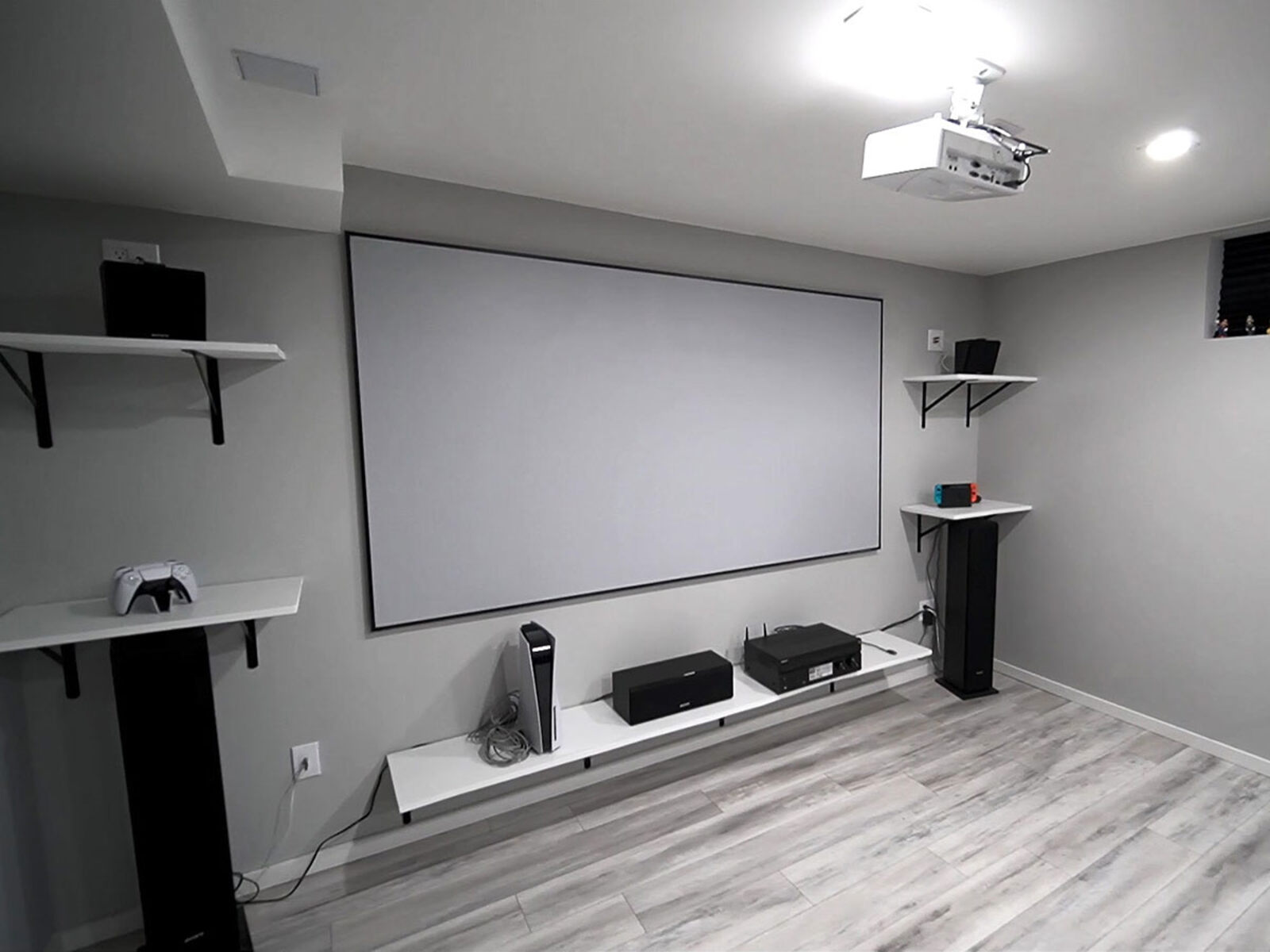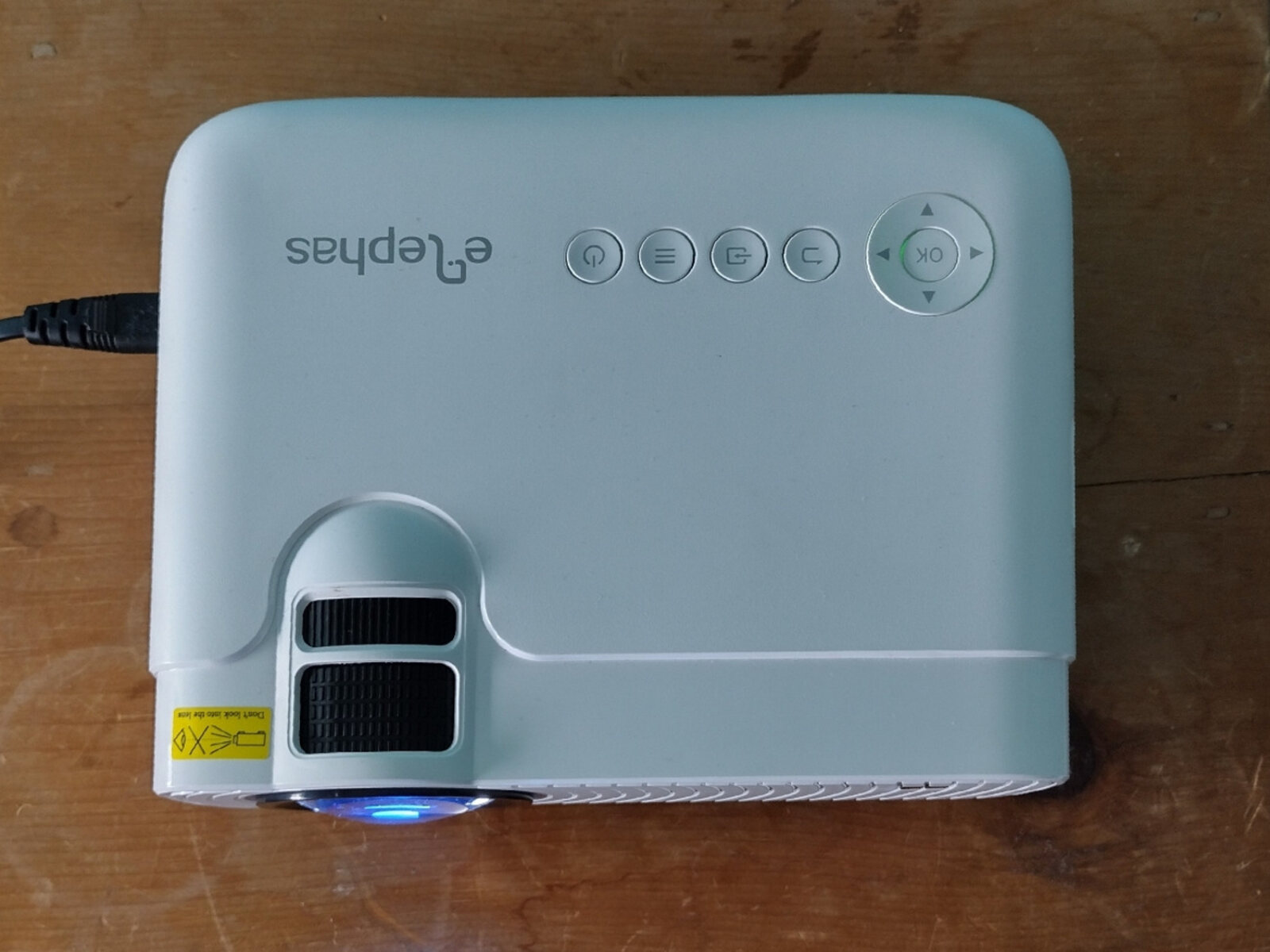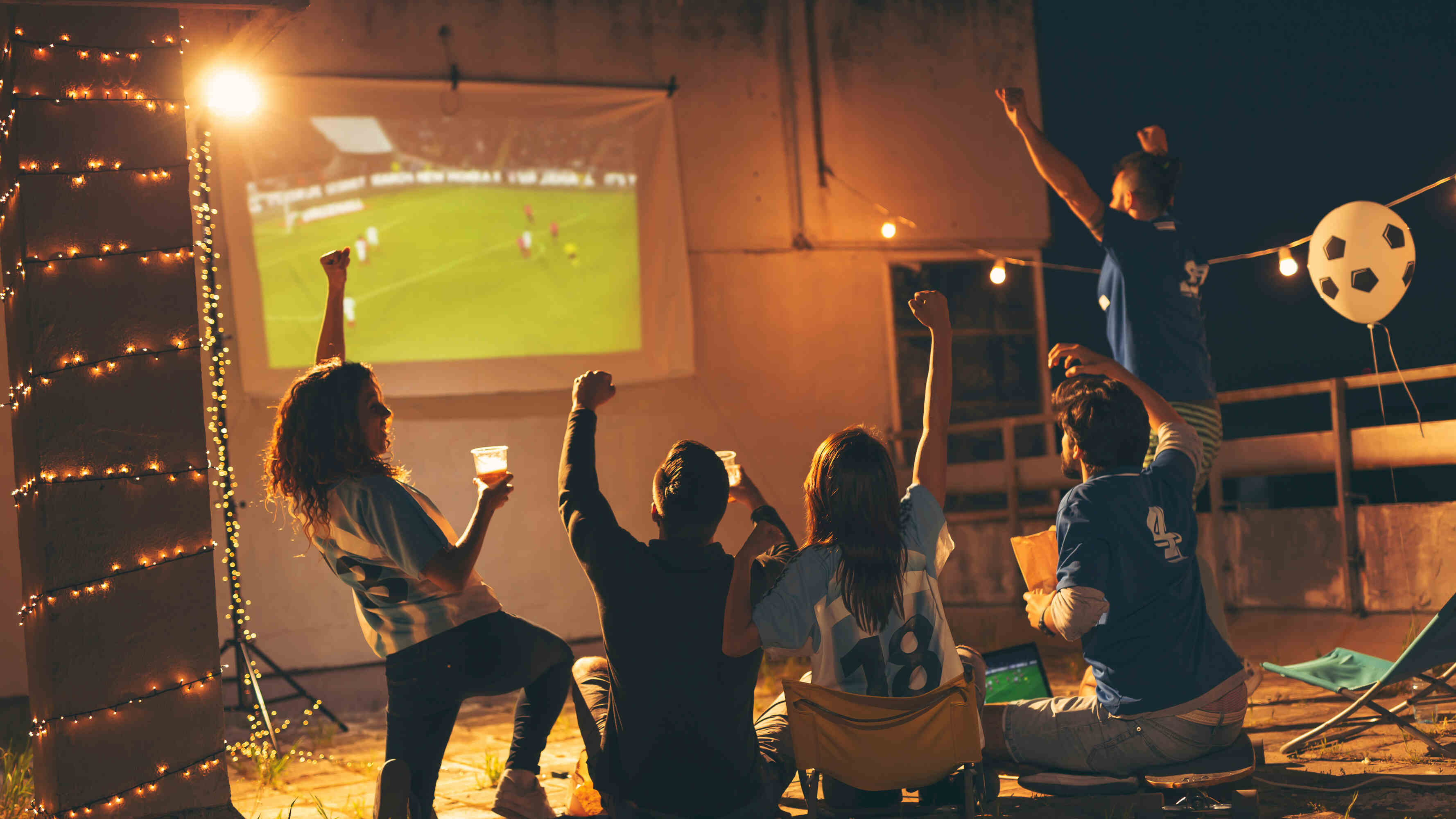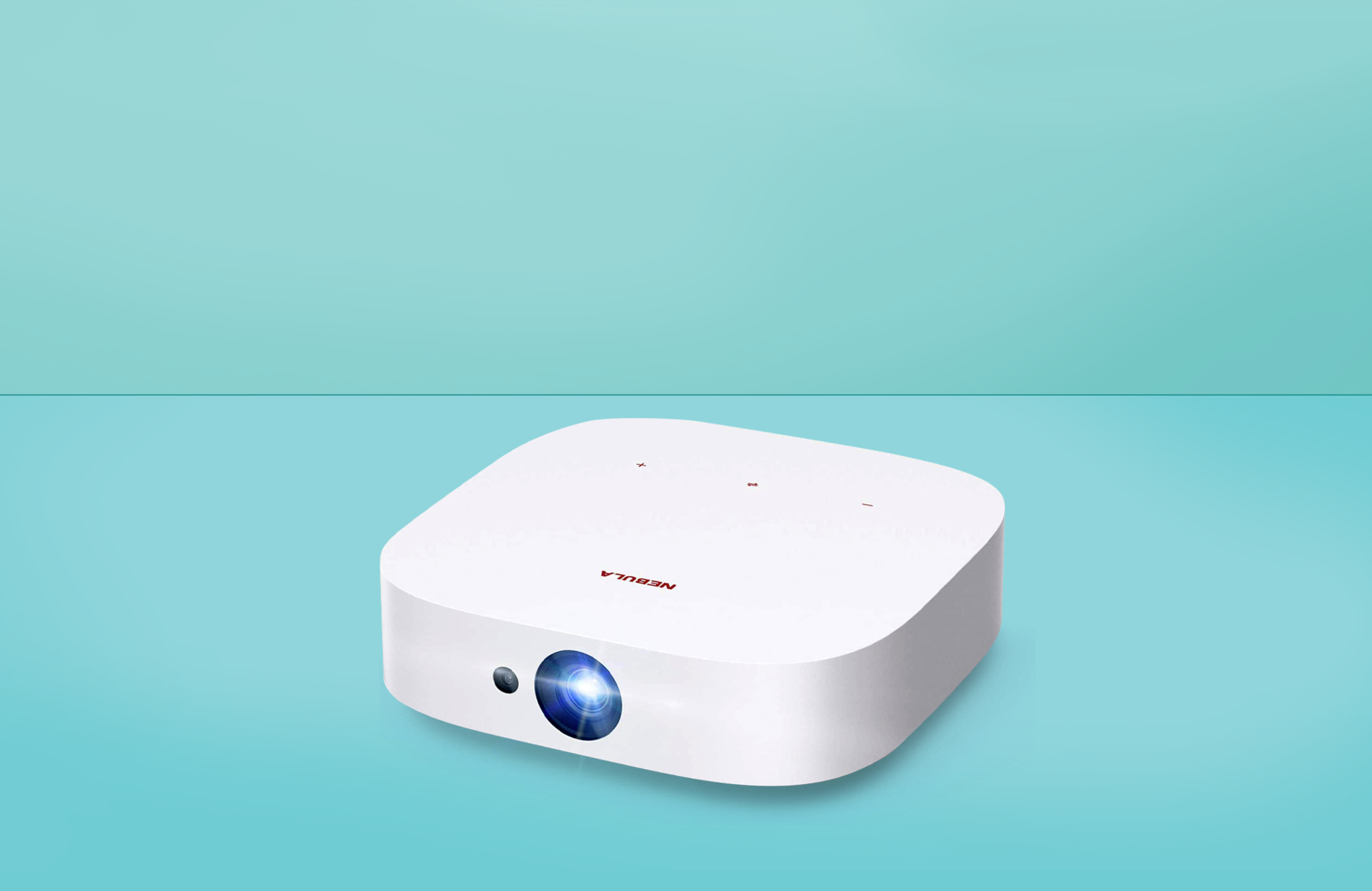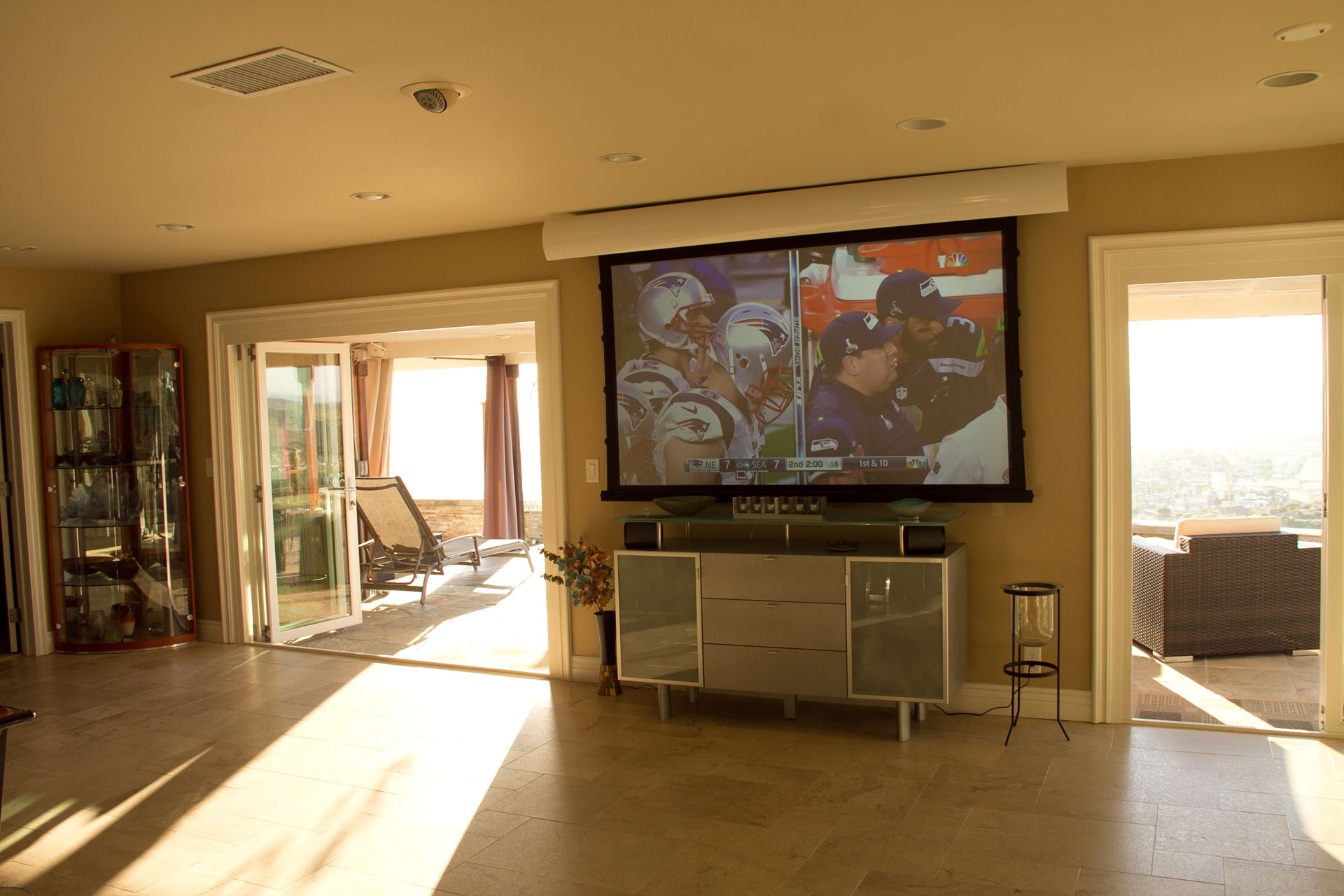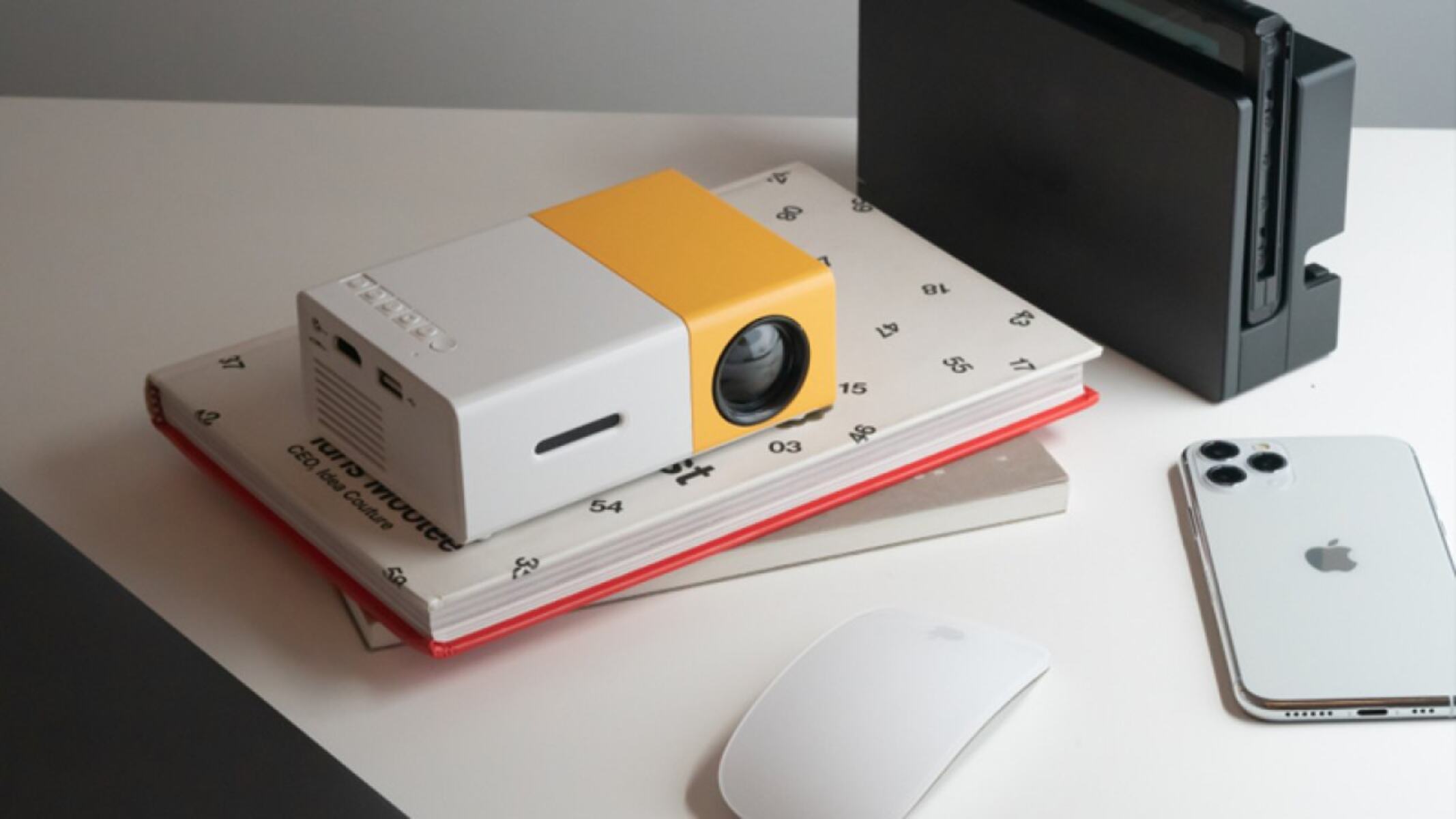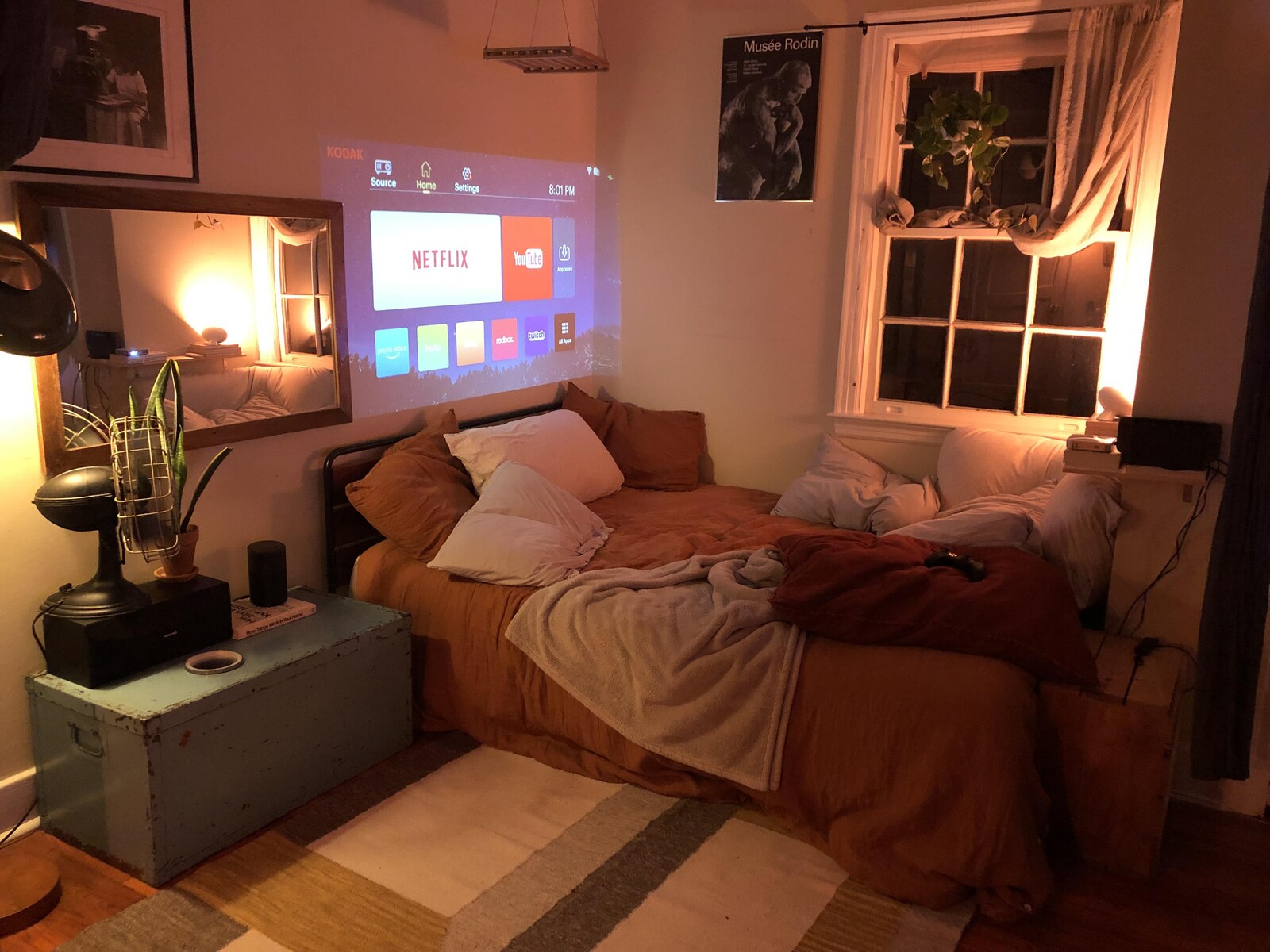Why Size Matters
When choosing a projector screen, size matters more than you might think. The size of the screen directly affects the overall viewing experience and can have a significant impact on the quality and clarity of the images projected.
One of the primary reasons why size matters is because it determines the audience’s ability to see the details and enjoy the content being displayed. A screen that is too small can make it difficult for viewers to read text or discern finer details, resulting in a less immersive experience.
On the other hand, a screen that is too large for the viewing space can be overwhelming and strain the eyes of the viewers. It can also lead to distorted images and loss of image quality. Finding the right size projector screen is essential to strike the right balance between viewing comfort, image quality, and immersive experience.
Another reason why size matters is the aspect ratio. Different projectors and content sources use different aspect ratios, such as 16:9 or 4:3. Choosing the right screen size with the appropriate aspect ratio ensures that the content is displayed without any cropping or stretching, providing a seamless and visually appealing experience.
Additionally, the size of the projector screen is closely related to the viewing distance. A larger screen typically requires a longer viewing distance to maintain optimal image quality and prevent eye strain. Conversely, a smaller screen can be suitable for shorter viewing distances, ensuring that the entire image fits within the viewer’s field of vision.
It’s worth noting that the size of the room plays a crucial role in determining the ideal screen size. A smaller room may not accommodate a large screen without compromising the viewing experience, while a larger room can comfortably accommodate a larger screen for a more cinematic feel.
In summary, choosing the right size for your projector screen is essential for an immersive and enjoyable viewing experience. Consider factors such as viewing distance, screen aspect ratio, room size, and content resolution. Whether you’re watching movies, giving presentations, or gaming, finding the perfect size screen enhances the visual impact and ensures that every detail is seen clearly.
Factors to Consider
When selecting a projector screen, there are several important factors to consider to ensure you choose the right size for your specific needs. By taking these factors into account, you can optimize your viewing experience and make the most out of your projector setup.
Viewing Distance: One of the crucial factors to consider is the viewing distance. The distance between the projector and the screen, as well as the distance between the screen and the viewers, affects how the content is perceived. A general rule of thumb is to aim for a viewing distance that is 1.5 to 2 times the width of the screen. This allows viewers to comfortably take in the entire image without straining their eyes.
Screen Aspect Ratio: The aspect ratio of the screen refers to the proportional relationship between its width and height. Common aspect ratios include 16:9 and 4:3. It’s important to choose a screen that matches the aspect ratio of the content you’ll be displaying, ensuring that it fills the entire screen without any cropping or distortion.
Room Size: The size of the room where the projector screen will be installed is a critical factor to consider. Larger rooms can accommodate larger screens, providing a more immersive experience. However, in smaller rooms, a larger screen may be overwhelming and lead to discomfort. Take measurements of the room to determine the appropriate screen size that fits well within the available space.
Resolution: The resolution of the projected image is another important consideration. Higher resolution content requires a larger screen size to fully appreciate the level of detail. Alternatively, if most of your content is in lower resolution, a smaller screen might suffice. Consider the resolution of your content and the capabilities of your projector to determine the appropriate screen size.
Screen Material: The material of the screen can affect the image quality and brightness. Some screens are designed for enhanced color reproduction, while others are optimized for ambient light rejection. Consider the lighting conditions of the room and choose a screen material that suits your specific needs.
By carefully considering these factors – viewing distance, screen aspect ratio, room size, resolution, and screen material – you can make an informed decision when selecting the right size for your projector screen. Taking the time to evaluate these factors ensures that you’ll enjoy optimal image quality, comfort, and an immersive viewing experience.
Viewing Distance
The viewing distance plays a crucial role in determining the appropriate size for your projector screen. Finding the right balance between screen size and viewing distance is essential for a comfortable and enjoyable viewing experience.
A general guideline for determining the ideal viewing distance is to consider the width of the screen. The viewing distance should be roughly 1.5 to 2 times the width of the screen. This range allows viewers to appreciate the details of the content without straining their eyes or feeling overwhelmed by the image.
Too short of a viewing distance can result in a viewer feeling overwhelmed by the size of the screen. This can lead to discomfort and make it challenging to focus on the content. Additionally, it can lead to eye strain and fatigue, especially when watching for extended periods.
On the other hand, if the viewing distance is too far, the image may appear small and lacking in detail. Viewers may struggle to fully grasp the intended impact of the content, especially with smaller text or intricate visuals.
Consider the purpose of your projector setup to determine the ideal viewing distance. For example, if you’re using a projector for home theater purposes, a larger screen with a slightly longer viewing distance can recreate a cinematic experience. On the other hand, if you’re setting up a projector for presentations, a shorter viewing distance might be more appropriate to allow for clear visibility of text and graphical elements.
Take into account the specific needs of your viewing environment. Consider factors such as the size of the room and the seating arrangement. Measure the distance between the screen and the viewers to ensure it falls within the recommended range.
Keep in mind that individual preferences can also influence the ideal viewing distance. Some viewers may prefer a closer seat for a more immersive experience, while others might feel more comfortable with a bit of distance.
By considering the viewing distance, you can choose the right size for your projector screen that ensures optimal visibility, comfort, and engagement with the content. Finding the perfect balance between screen size and viewing distance will allow you to fully enjoy the visuals and enhance your overall viewing experience.
Screen Aspect Ratio
The aspect ratio of a projector screen is the proportional relationship between its width and height. It determines how content is displayed and whether it fills the screen without any distortion or cropping. Choosing the right screen aspect ratio is crucial to ensure an optimal viewing experience.
Two common aspect ratios used in projector screens are 16:9 and 4:3. The 16:9 aspect ratio is widely used for widescreen content, including movies and most modern TV shows. It provides a wide and immersive viewing experience. On the other hand, the 4:3 aspect ratio was the standard for older television sets and some projectors. It is more square-shaped compared to 16:9 and is still used for certain applications.
To determine the ideal screen aspect ratio, consider the type of content you’ll be displaying. If you primarily watch movies or enjoy streaming services, a 16:9 screen is typically the best choice as it ensures that widescreen content is displayed without any cropping.
For presentations, educational purposes, or older content that still uses the 4:3 aspect ratio, a 4:3 screen might be more suitable. This ensures that all content fits within the screen and is displayed accurately, without any stretching or distortion.
Another factor to consider is the compatibility between your projector and the screen aspect ratio. Check the specifications of your projector to determine its native aspect ratio. While many projectors support both 16:9 and 4:3 aspect ratios, it’s important to confirm compatibility to achieve the best image quality.
Keep in mind that you can also choose a motorized or manually adjustable screen if you want the flexibility to switch between different aspect ratios. These screens allow you to customize the aspect ratio based on the type of content you’re watching, ensuring a proper display every time.
Ultimately, selecting the right screen aspect ratio is essential to ensure that your content is displayed accurately and without any distortion. Consider the type of content you’ll be viewing, the compatibility with your projector, and the flexibility you require when making your decision.
Room Size
The size of the room where the projector screen will be installed is an important factor to consider when selecting the appropriate screen size. The size of the room can directly impact the viewing experience, image quality, and overall aesthetics of your projection setup.
In a smaller room, it’s important to choose a screen size that fits well within the available space. A screen that is too large for a small room can overwhelm the space and make it feel cramped. It can also lead to a distorted viewing experience, as viewers may need to sit too close to the screen to take in the entire picture. On the other hand, a screen that is too small in a larger room can make it challenging for viewers to see the details, leading to a less immersive experience.
Measure the dimensions of your room to determine the available space for the projection setup. Take into account any furniture, columns, or other elements that may impact the placement and size of the screen. Consider the seating arrangement as well, ensuring that viewers have an unobstructed view of the screen from various angles within the room.
It’s also important to consider the ceiling height of the room. A room with low ceilings may require a screen size that is mounted closer to the wall to maintain adequate clearance. On the other hand, a room with high ceilings can accommodate a larger screen size without any height restrictions.
Another aspect to consider is the overall aesthetics of the room. The size of the screen should complement the room’s design and layout. A large screen in a minimalist or compact room may overpower the space, while a small screen in a spacious, theater-like room may seem underwhelming.
Additionally, take into account the distance between the projector and the screen. In a smaller room, you may have limited space for projector placement, which could affect the size of the screen you can install. Ensure that the projector’s throw distance aligns with the available space for optimal image projection.
Taking into consideration the size of the room, available space, ceiling height, seating arrangement, and overall aesthetics will help you determine the appropriate screen size that complements your room and provides an immersive viewing experience.
Resolution
The resolution of your projector and the content you’ll be displaying is an important factor to consider when choosing the right size for your projector screen. Resolution refers to the number of pixels used to display an image and directly affects the level of detail and clarity.
Higher resolution content, such as 1080p (Full HD) or 4K Ultra HD, contains more pixels and requires a larger screen size to fully appreciate the level of detail. If you have a high-resolution projector and frequently watch movies, play video games, or view high-quality images, opt for a larger screen size to ensure that you can enjoy every tiny detail.
Conversely, if your projector has a lower resolution, such as 720p (HD) or lower, a smaller screen size may be sufficient. The lower resolution may not offer as much detail, and stretching it across a larger screen can result in a pixelated and less sharp image.
It’s important to match the screen size with the resolution of your content to achieve the best image quality. If you have a 1080p projector, for example, investing in a larger screen size will allow you to fully appreciate the high-definition quality and enjoy a more immersive viewing experience.
Consider the types of content you’ll be projecting and the resolution capabilities of your projector. If you primarily watch HD movies or play video games, a larger screen size will enhance your visual experience. Conversely, if your content is primarily lower resolution or you’re using the projector for basic presentations, a smaller screen may suffice.
Keep in mind that projector technology continues to advance, and higher resolution options are becoming more accessible. If you plan to upgrade your projector in the future, it may be worth considering a screen size that allows for future growth and accommodates higher resolution content.
By considering the resolution of your projector and content, you can determine the appropriate screen size that allows you to fully enjoy the level of detail and clarity provided by your projector setup.
Screen Material
The material of the projector screen is a crucial factor to consider when determining the right size for your setup. The screen material directly impacts the image quality, brightness, and viewing angle, making it an essential component of your projection system.
One of the key aspects of screen material is its ability to reflect light evenly and accurately. Different screen materials have varying levels of gain, which refers to their ability to reflect light back to the viewer. Higher gain screens reflect more light, resulting in brighter images, while lower gain screens offer a wider viewing angle but may appear dimmer.
Consider the lighting conditions of the room where the projector screen will be installed. If the room has controlled lighting and minimal ambient light, a lower gain screen may be suitable as it provides a wider viewing angle. This ensures that viewers can see the content clearly, even from off-center positions.
On the other hand, if the room has a lot of ambient light or windows that cannot be fully covered, a higher gain screen may be necessary to counteract the light and maintain a vibrant image. This ensures that the projected content is visible and crisp, even in well-lit conditions.
In addition to gain, the material of the screen can also impact color reproduction. Some screens are designed to enhance color accuracy and vibrancy, making them ideal for multimedia presentations, gaming, or watching movies. Others are formulated to improve contrast and black levels, resulting in better image depth and detail.
Consider the specific needs of your projection setup and the type of content you’ll be displaying. If you prioritize accurate color reproduction, choose a screen material that is optimized for color fidelity. If you’re more concerned about contrast and deep blacks, look for a screen material that enhances these features.
It’s worth noting that certain screen materials have specific viewing angle limitations. Some materials perform best when viewed head-on, while others offer wider viewing angles, allowing for more flexibility in seating arrangements. Consider the seating arrangement in your room to ensure that all viewers have a good viewing experience, regardless of their position in the room.
By considering the screen material and its characteristics, you can select a size for your projector screen that maximizes image quality, brightness, and color fidelity. Take into account the lighting conditions, gain preferences, color reproduction, and viewing angles to ensure an optimal visual experience for all viewers.
Types of Projector Screens
There are various types of projector screens available, each offering unique features and benefits. Understanding the different types can help you choose the right screen for your specific needs and enhance your overall viewing experience.
1. Fixed Frame Screens: Fixed frame screens are permanently mounted on a frame, providing a flat and taut surface. They offer excellent image quality and are ideal for dedicated home theater installations. Fixed frame screens are available in various sizes and aspect ratios.
2. Motorized Screens: Motorized screens are designed to retract and extend with the touch of a button or a remote control. These screens are convenient, allowing for easy storage and deployment. Motorized screens are available in various formats, including ceiling-mounted, wall-mounted, or concealed-in-ceiling options.
3. Manual Pull-down Screens: Manual pull-down screens are an economical option that can be rolled up or down manually. They are easy to use and require minimal installation. These screens are suitable for classrooms, meeting rooms, and other spaces where a temporary projection setup is needed.
4. Tab-tensioned Screens: Tab-tensioned screens feature a motorized or manual mechanism that keeps the screen surface flat and taut. This tensioning system prevents wrinkles or waves in the screen material, ensuring a smooth and distortion-free image.
5. Portable Screens: Portable screens are lightweight and easy to transport, making them suitable for presentations on the go. These screens are typically freestanding with a tripod base or folding design, allowing for quick setup and breakdown.
6. Rear Projection Screens: Rear projection screens are designed to display images from the back, allowing the projector to be placed behind the screen. These screens are ideal for situations where the projector needs to be hidden from view, creating a cleaner and more visually appealing setup.
7. Ambient Light Rejection (ALR) Screens: ALR screens are specifically designed to reject ambient light, enhancing contrast and image clarity even in brightly lit environments. These screens are ideal for rooms with windows or high levels of ambient light.
Consider the specific requirements of your projection setup, such as the installation location, viewing conditions, and budget, to determine the most suitable type of screen for your needs. Each type has its own advantages and limitations, so it’s important to choose the one that aligns with your preferences and requirements.
Common Sizes and Applications
Projector screens come in a variety of sizes to accommodate different viewing environments and applications. Understanding common screen sizes and their recommended applications can help you choose the right size for your specific needs.
1. Small screens (less than 100 inches): Small screens are perfect for compact spaces, such as bedrooms, offices, or small conference rooms. They provide a clear and focused image for individual or small group viewing. These sizes are often between 60 to 84 inches, offering an immersive experience without overwhelming the space.
2. Medium screens (100 to 120 inches): Medium-sized screens are suitable for mid-sized rooms or home theaters, providing a more cinematic experience. These screens are commonly used for movie nights, gaming sessions, or presentations in classrooms or medium-sized conference rooms.
3. Large screens (120 to 150 inches): Large projector screens are typically found in dedicated home theaters, screening rooms, or auditoriums. These screens offer an immersive viewing experience, making them ideal for movie enthusiasts, sports fans, or venues that require a high-impact visual display.
4. Giant screens (over 150 inches): Giant screens are used in large venues, such as event halls, theaters, or sports arenas. These screens provide a captivating and larger-than-life visual experience, capturing the attention of large audiences during concerts, sports events, or live broadcasts.
When choosing the size of your projector screen, consider the viewing distance, room size, and the number of viewers. Larger screens may require a longer viewing distance to avoid eye strain, while smaller screens can accommodate shorter viewing distances without losing image quality.
It’s also important to consider the content you’ll be projecting. For detailed visuals, such as movies or high-resolution images, a larger screen size allows you to fully appreciate the intricate details. In contrast, if you mainly display text or graphs for presentations, a smaller screen size can ensure better readability and clarity.
A consideration to keep in mind is the resolution of your projector. Higher resolution projectors generally pair well with larger screens, as they can display more detailed and sharp images. Lower resolution projectors may be better suited to smaller screen sizes to avoid pixelation and maintain image quality.
By understanding the common sizes and their recommended applications, you can choose the right screen size that creates an immersive and visually appealing experience for your viewers, no matter the environment or application.
How to Measure for the Right Size
Measuring for the right size of your projector screen is essential to ensure a perfect fit and an optimal viewing experience. Below are the steps to follow when measuring for the right size:
1. Determine the Aspect Ratio: Start by determining the aspect ratio you’ll be using. Common aspect ratios include 16:9 and 4:3. This will help you choose a screen that matches the content you’ll be displaying.
2. Measure the Viewing Distance: Consider the viewing distance between the screen and the viewers. Measure the horizontal distance from the seating area to where the screen will be located. Multiply this distance by the recommended factor (1.5 to 2 times the screen width) to determine the ideal screen width.
3. Consider the Room Size: Evaluate the size of the room where the screen will be installed. Measure the available wall space and consider any obstructions, such as windows or doors, that may limit the size of the screen you can install.
4. Account for Mounting and Projection Space: Consider the space required for mounting the screen and the projection itself. If using a fixed frame or motorized screen, ensure that you have sufficient wall space or ceiling height to accommodate the screen’s dimensions.
5. Check the Projector Throw Distance: Review the specifications of your projector to determine its throw distance. This is the distance between the projector and the screen. Ensure that there is enough space for the projector to be positioned correctly based on the desired screen size.
6. Test with a Mock-up: If possible, use a template or tape to create a mock-up of the projected image on the wall. This will give you a visual representation of the screen size and help you assess if it suits your needs before making a final decision.
7. Seek Professional Advice: If you are unsure or have specific requirements, consult with a professional installer or an expert in projector screens. They can provide guidance and help you find the right size for your setup.
By taking accurate measurements, considering the room size and viewing distance, and accounting for any mounting or projection space limitations, you can ensure that the chosen screen size fits perfectly into your viewing environment and provides an enjoyable viewing experience.
Final Thoughts
Choosing the right size for your projector screen is essential to optimize your viewing experience and make the most out of your projector setup. By considering factors such as viewing distance, screen aspect ratio, room size, resolution, and screen material, you can make an informed decision that aligns with your specific needs and preferences.
Remember, size matters when it comes to projector screens. A screen that is too small can make it challenging to see details, while a screen that is too large can be overwhelming and lead to a loss of image quality. Finding the right balance ensures optimal visibility, comfort, and immersion.
Additionally, take into account the specific requirements of your viewing environment. Consider the lighting conditions, room size, and ceiling height to select a screen size that complements the space and enhances the overall aesthetics.
Keep in mind that technology evolves, and projector capabilities and resolution continue to improve. It’s important to choose a screen size that allows for future growth and accommodates higher resolution content, providing you with a versatile and future-proof setup.
If you’re still unsure about the right size, don’t hesitate to seek advice from professionals or experts in projector screens. They can provide valuable insights and help you find the perfect size that meets your specific requirements.
Ultimately, by carefully considering these factors and taking accurate measurements, you can confidently select the right size for your projector screen, ensuring an immersive and enjoyable viewing experience for yourself, family, friends, or audience.







